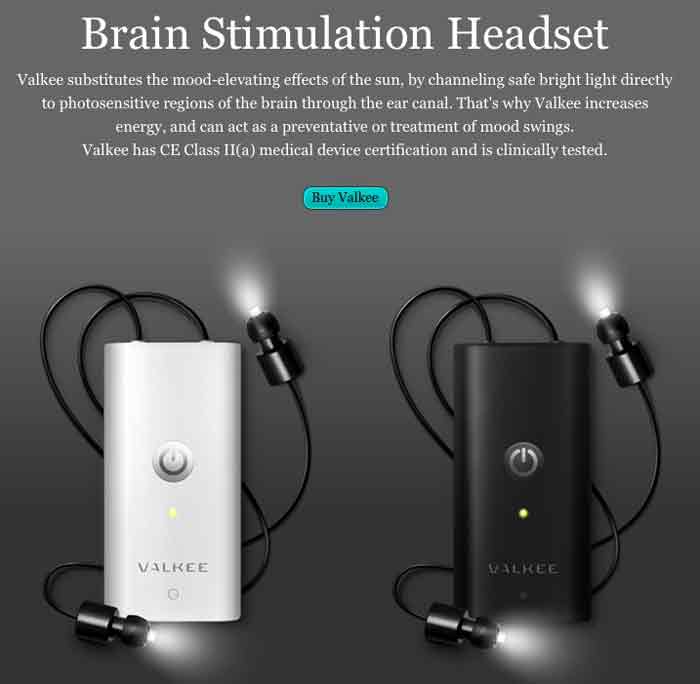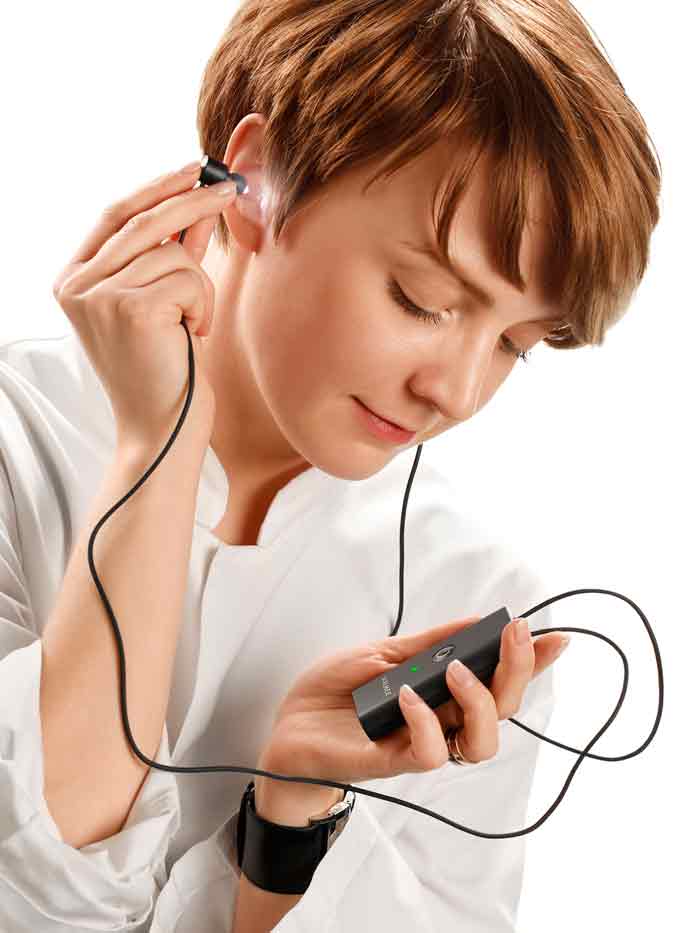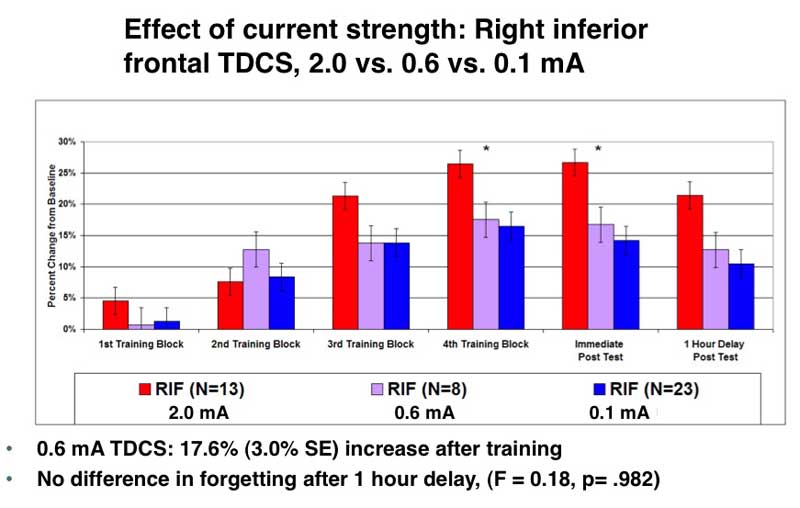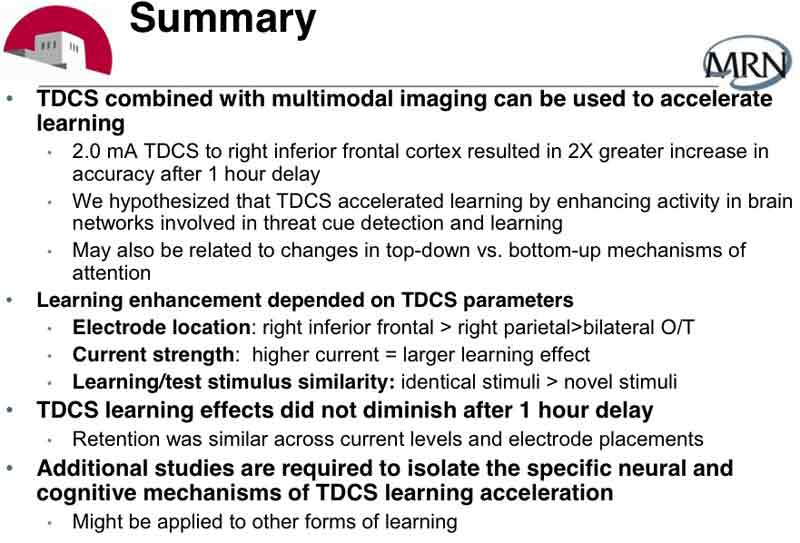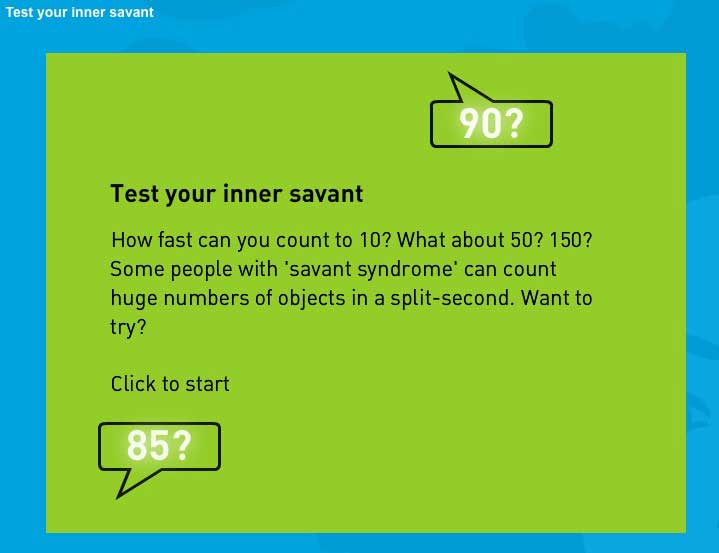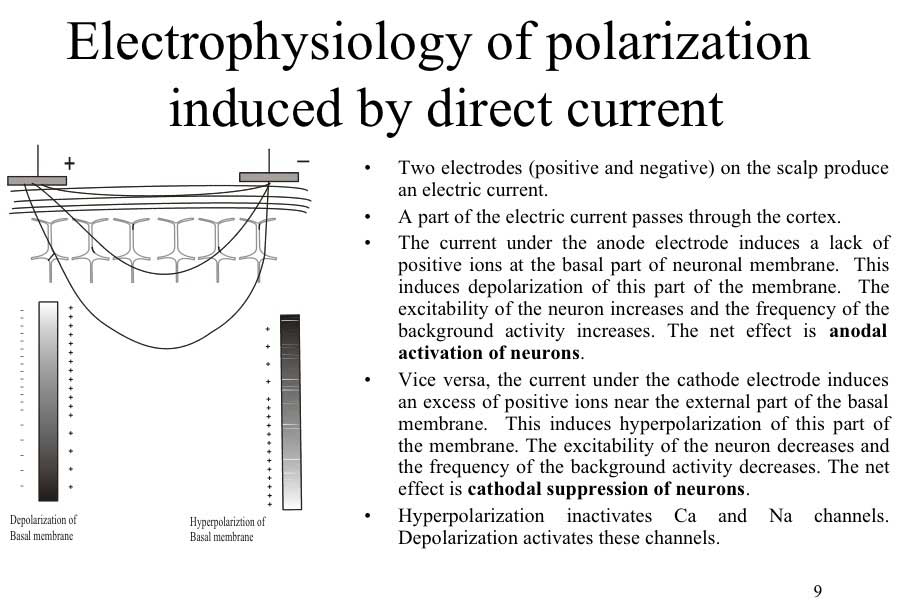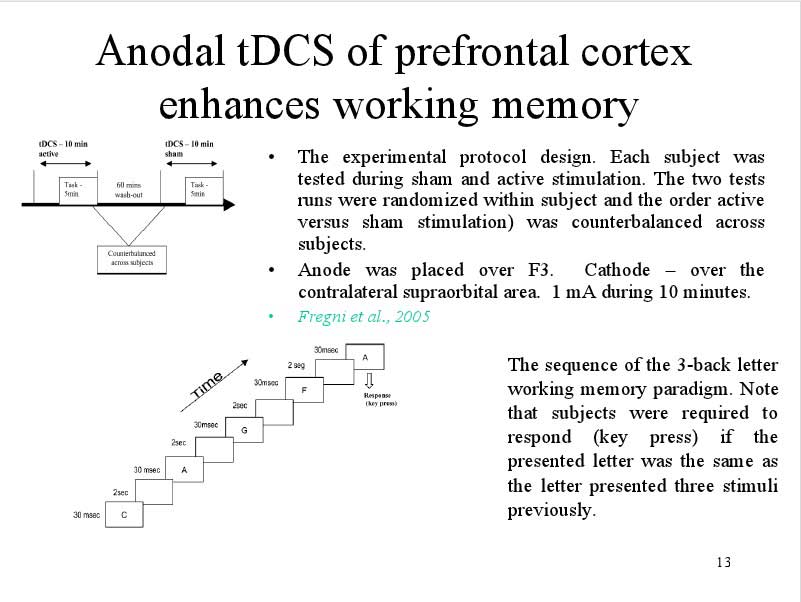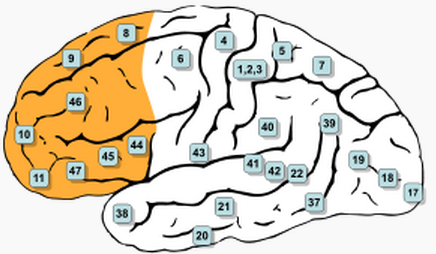Another group of researchers hot on the trail how tDCS might be used to enhance brain function is the (non-profit) Mind Research Network of Albuquerque, NM. A lot of their work is funded by NiH, but what I’ve seen around their tDCS research pertains to increasing soldier’s ability to detect danger, and is funded by DOA (2010 Research Report pdf) Unfortunately I was not able to find a full version of the paper not behind a pay wall. The abstract is here and from a Scientific America article…
Subjects definitely register the stimulation, but it is not unpleasant. “It feels like a mild tickling or slight burning,” says undergraduate student Lauren Bullard, who was one of the subjects in another study on TDCS and learning reported at the meeting, along with her mentors Jung and Michael Weisend and colleagues of the Mind Research Network in Albuquerque. “Afterward I feel more alert,” she says. But why?
Bullard and her co-authors sought to determine if they could measure any tangible changes in the brain after TDCS, which could explain how the treatment accelerates learning. The researchers looked for both functional changes in the brain (altered brain-wave activity) and physical changes (by examining MRI brain scans) after TDCS.
They used magnetoencephalography (MEG) to record magnetic fields (brain waves) produced by sensory stimulation (sound, touch and light, for example), while test subjects received TDCS. The researchers reported that TDCS gave a six-times baseline boost to the amplitude of a brain wave generated in response to stimulating a sensory nerve in the arm. The boost was not seen when mock TDCS was used, which produced a similar sensation on the scalp, but was ineffective in exciting brain tissue. The effect also persisted long after TDCS was stopped. The sensory-evoked brain wave remained 2.5 times greater than normal 50 minutes after TDCS. These results suggest that TDCS increases cerebral cortex excitability, thereby heightening arousal, increasing responses to sensory input, and accelerating information processing in cortical circuits.
Remarkably, MRI brain scans revealed clear structural changes in the brain as soon as five days after TDCS. Neurons in the cerebral cortex connect with one another to form circuits via massive bundles of nerve fibers (axons) buried deep below the brain’s surface in “white matter tracts.” The fiber bundles were found to be more robust and more highly organized after TDCS. No changes were seen on the opposite side of the brain that was not stimulated by the scalp electrodes.
via Amping Up Brain Function: Transcranial Stimulation Shows Promise in Speeding Up Learning: Scientific American.
